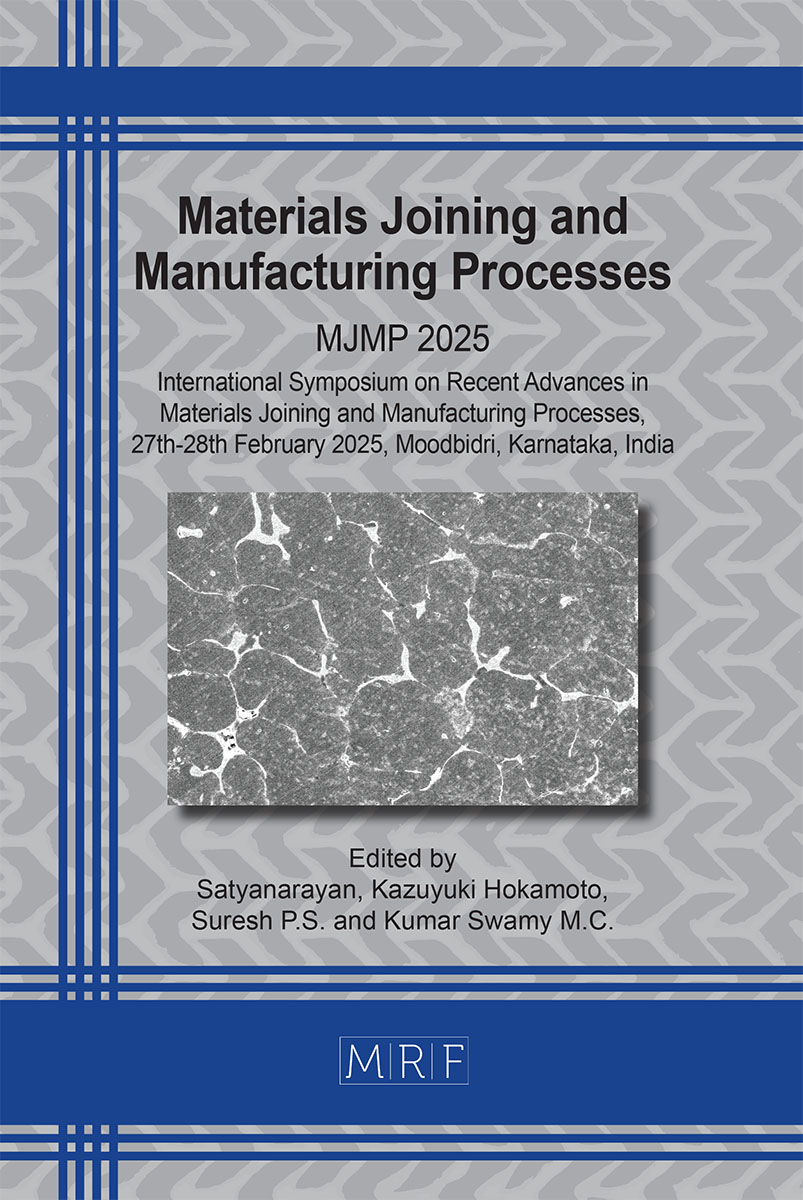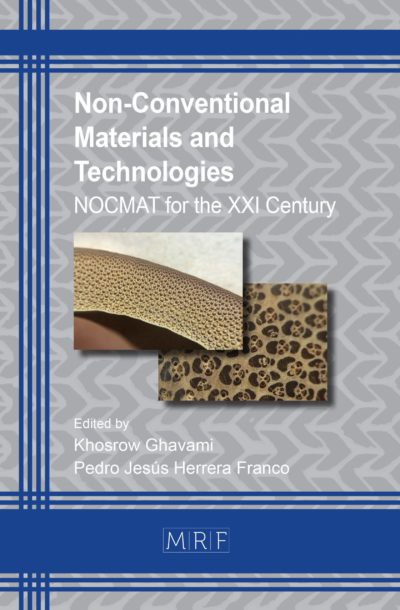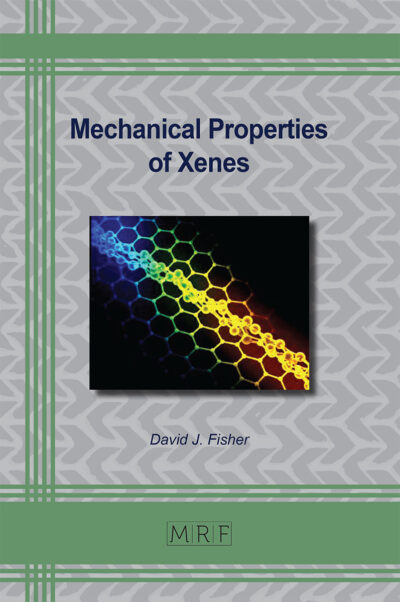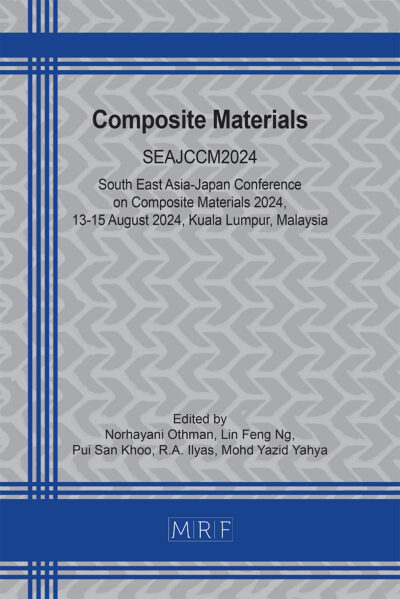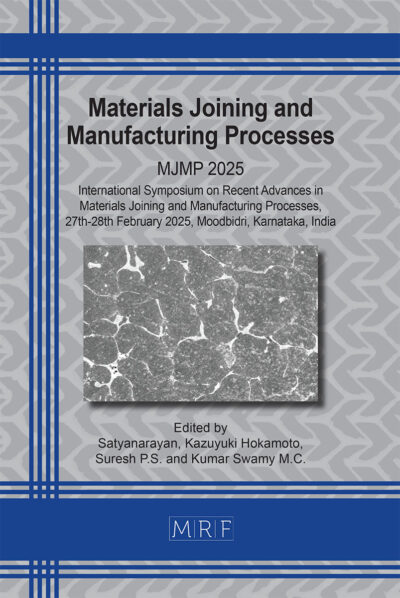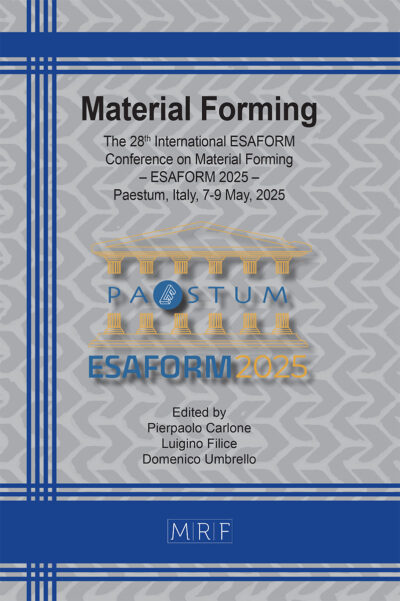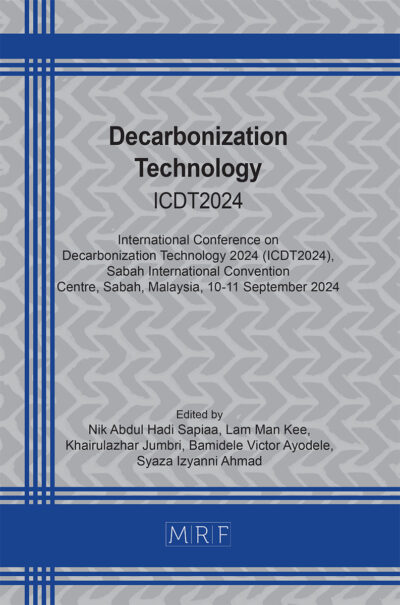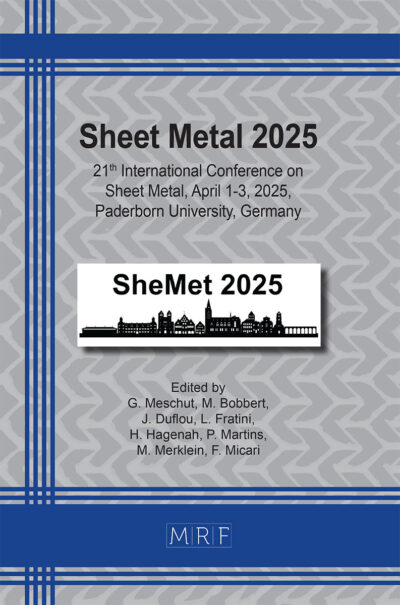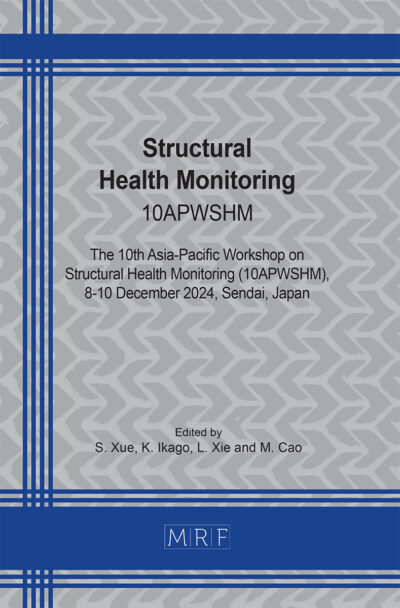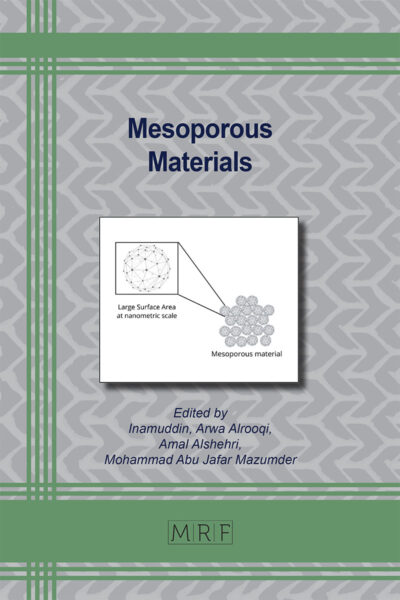A review on effect of filler materials on thermal properties of hybrid polymer matrix composites
Gurushanth B. Vaggar, S.L. Nadaf, Narayan V., Dharshith, Praveen V.
Abstract. Hybrid polymer composites are increasingly in demand due to their lightweight and high-strength properties. However, traditional polymers exhibit poor thermal properties and limited strength under high-temperature conditions. Glass fibre-reinforced epoxy composites, offer excellent strength and stiffness, with poor thermal stability, leading to degradation under heat. Enhancing the thermal properties of these materials without compromising mechanical integrity is critical. Incorporating high thermal conductivity filler particles, such as CNTs, graphene, silicon carbide, copper powder, or copper mesh, into carbon fibre-reinforced polymer (CFRP) and glass fibre-reinforced polymer (GFRP) creates hybrid composites with improved thermal stability and resistivity. These hybrid composites can withstand high-temperature environments while maintaining structural strength and stiffness, broadening their applications across aerospace, automotive, pressure vessels, and wind energy industries. These sectors collectively account for 52.17% of the total glass fibre market. Globally, the demand for glass fibre is 47.80 million tons per year, growing annually at a rate of 10.7%. Despite the challenge of nonlinear thermal property variations and complex temperature behaviour, the strategic addition of fillers significantly improves thermal performance. This makes polymer composites a vital material in advanced structural applications where both thermal resistance and mechanical reliability are paramount. The overview of the current work is to study the effect of filler particles on the thermal properties of polymer composites.
Keywords
Glass Fibre, Epoxy Resin Composites, Filler Particles, Thermal Conductivity, Thermogravimetric Analysis, Coefficient of Thermal Expansion
Published online 6/1/2025, 8 pages
Copyright © 2025 by the author(s)
Published under license by Materials Research Forum LLC., Millersville PA, USA
Citation: Gurushanth B. Vaggar, S.L. Nadaf, Narayan V., Dharshith, Praveen V., A review on effect of filler materials on thermal properties of hybrid polymer matrix composites, Materials Research Proceedings, Vol. 55, pp 64-71, 2025
DOI: https://doi.org/10.21741/9781644903612-11
The article was published as article 11 of the book Materials Joining and Manufacturing Processes
![]() Content from this work may be used under the terms of the Creative Commons Attribution 3.0 license. Any further distribution of this work must maintain attribution to the author(s) and the title of the work, journal citation and DOI.
Content from this work may be used under the terms of the Creative Commons Attribution 3.0 license. Any further distribution of this work must maintain attribution to the author(s) and the title of the work, journal citation and DOI.
References
[1] R. M. Christensen, Mechanics of Composite Materials, Wiley-Interscience, New York, (1979). 01-30.
[2] Md. A. Tabibzadeh, Tensile, compressive and shear properties of unidirectional glass/epoxy composites subjected to mechanical loading and low-temperature services, Ind. J. of Engg. & Mats. Sci., 20 (2013), 299-309.
[3] Y. Shi, J. Yang, F. Gao, Q. Zhang, Covalent Organic Frameworks: Recent Progress in Biomedical Applications. ACS Nano 17(3) (2023), 1879-1905. https://doi.org/10.1021/acsnano.2c11346
[4] M. H. Islam, S. Afroj, M. A. Uddin, D. V. Andreeva, K. S. Novoselov, N. Karim, Graphene and CNT-Based Smart Fiber-Reinforced Composites: A Review, Adv. Funct. Mater. 32, (2022), 2205723, 01-31. https://doi.org/10.1002/adfm.202205723
[5] E. El-Seidy, M. Sambucci, M. Chougan, M. J. Al-Kheetan, I. Biblioteca, M. Valente, S. H. Ghaffar, Mechanical and physical characteristics of alkali-activated mortars incorporated with recycled polyvinyl chloride and rubber aggregates. J. Build. Eng. 60, (2022),105043, 01-15. https://doi.org/10.1016/j.jobe.2022.105043
[6] A. G. Williams, E. Moore, A. Thomas, J. A. Johnson, Graphene-Based Materials in Dental Applications: Antibacterial, Biocompatible, and Bone Regenerative Properties. Int. J. Biomater. 8803283, (2023), 01-18. https://doi.org/10.1155/2023/8803283
[7] A. S. G. Edwin, O. Dania, Á. L. Miguel, V. Itziar, G. B. Javier, Preparation and Characterization of Polymer Composite Materials Based on PLA/TiO2 for Antibacterial Packaging, Poly., 10, (2018), 1365, 01-14. https://doi.org/10.3390/polym10121365
[8] A. Thamer, H. Y. Ali, J. J. Najwa, TGA, DSC, DTG Properties of Epoxy Polymer Nanocomposites by Adding Hexagonal Boron Nitride Nanoparticles, ARPN J of Engg and Appl. Sci. (14) 2, (2019), 567-574, https://doi.org/10.36478/jeasci.2019.567.574
[9] M. J. Zayza, N. J. Jubier, A. Subhi, Thermal Oxidative of UP/MgO Nanocomposites Using TGA and DSC Analysis, World Journal of Research and Review (WJRR), ISSN: 2455-3956, 10, 2, (2020) 18-24.
[10] C. Vivekanandhan, P. S. Sampath, K. P. Sathish, B. Mylsamy, A. Karthik, Characterization on thermal properties of glass fiber and Kevlar fiber with modified epoxy hybrid composites, J of Matls. and Res. Tech. 9,3 (2020), 3158-3167. https://doi.org/10.1016/j.jmrt.2020.01.061
[11] M. Ramesh, N. R. Lakshmi, N. Srinivasan, D. V. Kumar, D. Balaji, Influence of filler material on properties of fiber reinforced polymer composites: A review, e-Polymers 22 (2022), 898-916. https://doi.org/10.1515/epoly-2022-0080
[12] T. P. Sathishkumar, S. Satheeshkumar, J. Naveen, Glass fiber-reinforced polymer Composites: A review, J of Rei. Plts. and Comp., SAGE Publications, 33 (2014) 1258-1275. https://doi.org/10.1177/0731684414530790
[13] C. M. Ramesh, Experimental Study on Optimization of Thermal Properties of Natural Fibre Reinforcement Polymer Composites, , Open Access Lib. J., 5, 2333-9721, (2018), 01-14.
[14] R. Ambigai, S. Prabhu, Analysis on mechanical and thermal properties of glass carbon/epoxy-based hybrid composites, IOP Conf. Series: Mtls. Sci. and Engg. 402 (2018) 012136, 01-12. https://doi.org/10.1088/1757-899X/402/1/012136
[15] R. Ganesh, P. Anand, D. Wubishet, Experimental Investigation on Thermal Behaviours of Nanosilicon Carbide/Kenaf/Polymer Composite, J of Nano. 3906336, (2022), 01-09. https://doi.org/10.1155/2022/3906336
[16] K. M. Babu, M. Mettilda, Studies on Mechanical, Thermal, and Morphological Properties of Glass Fibre Reinforced Polyoxymethylene Nanocomposite, J of App. Chem., 82618, (2014), 01-08. https://doi.org/10.1155/2014/782618
[17] L. Bhanuprakash, S. Varghese, S. K. Singh, Glass Fibre Reinforced Epoxy Composites Modified with Graphene Nanofillers: Electrical Characterization, Hind. J. of Nano. (2022), 01-08. https://doi.org/10.1155/2022/4611251
[18] M. Farzana, Md. H. Marjanul, S. M. Sonali, M. Z. I. Mollah, Md. A. Amin, S. A. Khan, I. Farjana, R. A. Khan, Thermo-Mechanical Properties and Applications of Glass Fiber Reinforced Polymer Composites, Mod. Copts. in Mat. Sci., RIS publishers, 2692-5397 (2023), 01-09.
[19] B. Barbara, V. Katarina, V. Marko, M. Barbara, Thermal properties of polymer-matrix composites reinforced with E-glass fibers, J of Microele., Eltr. Comp. and Mtls., 45,3 (2015), 216 – 221.
[20] S. Galal, D. I. Chukov, V. V. Tcherdyntsev, V. G. Torokhov, D. Z. Dmitry, Effect of Glass Fibers Thermal Treatment on the Mechanical and Thermal Behavior of Polysulfone Based Composites, 12(04), 902 Polymers 2020, 01-11. https://doi.org/10.3390/polym12040902
[21] N. I. N. Haris, R. A. Ilyas, Md. Z. Hassan, S. M. Sapuan, A. Afdzaluddin, K. R. Jamaludin, S. A. Zaki, F. Ramlie, Dynamic Mechanical Properties and Thermal Properties of Longitudinal Basalt/Woven Glass Fiber Reinforced Unsaturated Polyester Hybrid Composites, Polymers 3343, (2021), 01-14. https://doi.org/10.3390/polym13193343
[22] T. Klaser, L. Balen, Ž. Skoko, L. Pavic, Š. Ana, Polylactic Acid-Glass Fiber Composites: Structural, Thermal, and Electrical Properties, Polymers 14(19), 4012 (2022), 01-11. https://doi.org/10.3390/polym14194012
[23] N. Siti, A. Syafiuddin, A. B. Hong Kueh, A. Maddu, Physical, thermal, and mechanical properties of polypropylene composites filled with rattan nanoparticles, J of App. Res. and Techn., 15 (2017) 386-395. https://doi.org/10.1016/j.jart.2017.03.008
[24] G. B. Vaggar, S. C. Kamate, S. L. Nadaf, A study on thermal conductivity and thermogravimetric analysis of glass fiber epoxy resin composites modified with silicon carbide and copper nanoparticles. Mtls. Today: Prodgs., 66 (2022), 2308-2314. https://doi.org/10.1016/j.matpr.2022.06.230

